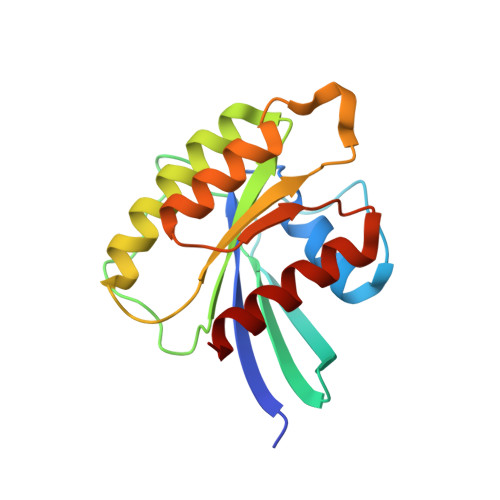Structure-guided mutation of the conserved G3-box glycine in Rheb generates a constitutively activated regulator of mammalian target of rapamycin (mTOR).
Mazhab-Jafari, M.T., Marshall, C.B., Ho, J., Ishiyama, N., Stambolic, V., Ikura, M.(2014) J Biological Chem 289: 12195-12201
- PubMed: 24648513
- DOI: https://doi.org/10.1074/jbc.C113.543736
- Primary Citation of Related Structures:
4O25, 4O2L, 4O2R - PubMed Abstract:
Constitutively activated variants of small GTPases, which provide valuable functional probes of their role in cellular signaling pathways, can often be generated by mutating the canonical catalytic residue (e.g. Ras Q61L) to impair GTP hydrolysis. However, this general approach is ineffective for a substantial fraction of the small GTPase family in which this residue is not conserved (e.g. Rap) or not catalytic (e.g. Rheb). Using a novel engineering approach, we have manipulated nucleotide binding through structure-guided substitutions of an ultraconserved glycine residue in the G3-box motif (DXXG). Substitution of Rheb Gly-63 with alanine impaired both intrinsic and TSC2 GTPase-activating protein (GAP)-mediated GTP hydrolysis by displacing the hydrolytic water molecule, whereas introduction of a bulkier valine side chain selectively blocked GTP binding by steric occlusion of the ¦Ă-phosphate. Rheb G63A stimulated phosphorylation of the mTORC1 substrate p70S6 kinase more strongly than wild-type, thus offering a new tool for mammalian target of rapamycin (mTOR) signaling.
Organizational Affiliation:
From the Campbell Family Cancer Research Institute, Princess Margaret Cancer Centre and, Department of Medical Biophysics, University of Toronto, Toronto, Ontario M5G 2M9, Canada.


















